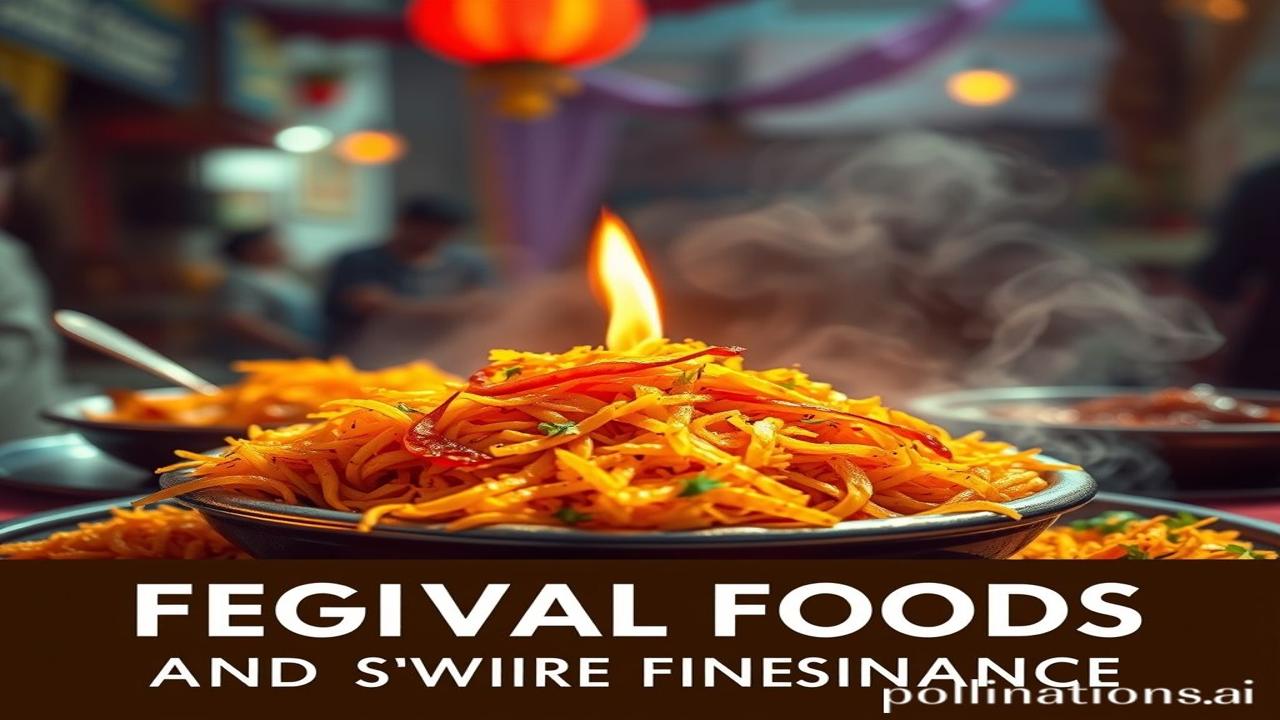Festival Foods: A Culinary Journey Through India’s Soul
Kabhi socha hai, Diwali ki mithaiyon mein jo pyaar hota hai, woh sirf shakkar aur ghee se nahi banta? Woh toh ek poori parampara hai, generations se chali aa rahi… a story etched in every bite. Let’s delve into the heart of India, where every festival is a celebration of flavors, a symphony of aromas, and a dance of traditions. We’ll explore the regional festival foods that define our diverse identity, revealing the secrets behind their creation and the stories they whisper.
Khane Ki Dastaan: The Historical Tapestry
What exactly are “festival foods?” They’re more than just tasty treats. They are culinary markers, signposts in the calendar of India’s festivals. Think about it – Ganesh Chaturthi and modaks, Pongal and sakkarai pongal, Diwali and ladoos. These are dishes deeply intertwined with specific celebrations, carrying cultural and religious significance.
Where did this tradition come from? Well, it’s as old as our civilization. From the ancient Vedic period, offering food to deities (the naivedya) has been a central part of religious rituals. Over centuries, these offerings evolved into elaborate feasts, with regional variations springing up based on local ingredients and culinary techniques. The Mughal influence brought in new flavors, blending Persian spices with Indian cooking styles. British rule introduced baking and western sweets, but the essence remained – festival food as a symbol of community, devotion, and celebration.
Zameeni Sach: People and Their Culinary Lives
Imagine a bustling village in Maharashtra during Ganesh Chaturthi. The air is thick with the scent of jasmine and incense. In every household, women are gathered around, their hands moving deftly as they prepare modaks, the steamed dumplings filled with coconut and jaggery, Lord Ganesha’s favorite sweet.
“Aye Rukmini, ghee thoda aur dal!” shouts the eldest aai (grandmother), overseeing the process. Rukmini, her face flushed with excitement, giggles and adds another dollop of golden ghee. This is not just cooking; it’s a ritual, a bonding experience passed down from generation to generation. Each modak is carefully shaped, offered to the deity with prayers, and then shared with family and friends.
Or picture a Tamil household during Pongal. The aroma of sakkarai pongal – rice cooked with milk, jaggery, and ghee – fills the air. Farmers, having just harvested their crops, offer the first grains of rice to the sun god, Surya. The pongal is cooked in a new clay pot, symbolizing prosperity and new beginnings. It’s not just a sweet dish; it’s a prayer, a thanksgiving, a celebration of nature’s bounty.
Dharohar Aur Pehchan: Cultural Echoes in Modern India
Even in today’s fast-paced world, these food traditions continue to thrive. In our modern cities, surrounded by fast food and global cuisine, these regional festival foods connect us to our roots, reminding us of our shared heritage. They are a tangible link to our bharatiyata, the essence of being Indian. Whether it’s the gujiya made during Holi in the North, or the payasam prepared during Onam in Kerala, these dishes evoke nostalgia, strengthen family bonds, and celebrate our cultural diversity. They are living reminders of our identity, passed down through generations, shaping who we are.
Mazedaar Tathya Ya Bhram-Bhanjak: Myth-Busters!
Log samajhte hain ki ladoo sirf Diwali mein bante hain. Lekin asli sach yeh hai that ladoos are prepared for various festivals and occasions across India. Motichoor ladoo, besan ladoo, til ladoo – each has its unique regional variation and significance. They are offered to deities, shared during celebrations, and gifted to loved ones. Ladoo, in its various forms, is a versatile and ubiquitous sweet that transcends regional boundaries.
Drishya Aur Bhavnayein: Sensory Overload!
Imagine walking through the lanes of Kolkata during Durga Puja. The air is thick with the fragrance of dhunuchi smoke (incense), the sounds of drums and bells echoing from the pandals. Stalls overflow with sweets – sandesh, rasgulla, mishti doi – each tempting you with its sugary goodness. The temple walls feel cool and smooth beneath your fingertips. The laughter of children fills the air. It’s a sensory overload, a celebration of life, faith, and community.
Antim Vichar Ya Uddharan: A Thought to Ponder
Food is not just sustenance; it is a language, a story, a cultural tapestry woven with love, devotion, and tradition. As the Upanishads say, “Annam Brahma,” meaning food is Brahman, the ultimate reality. Let us cherish these culinary traditions, celebrate their diversity, and pass them on to future generations, ensuring that the flavors of India continue to delight and inspire for years to come.
